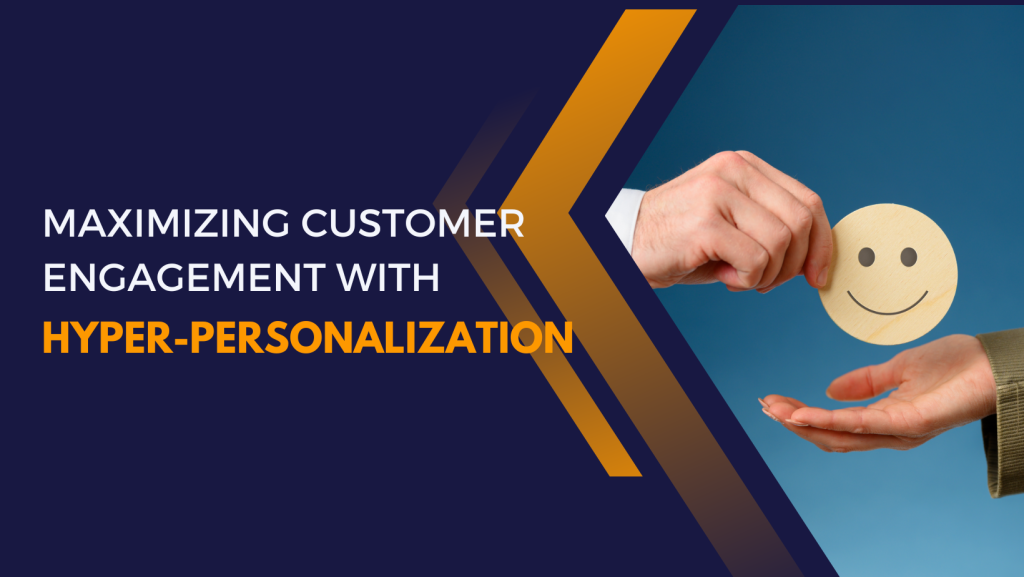Hyper-personalization is a marketing technique that tailors content, messaging, and experiences to each customer based on their behavior, preferences, and interests. Unlike traditional personalization, which typically segments customers into groups, hyper-personalization uses advanced data analytics to create unique experiences for each customer.
Quick Links
According to a recent study by Salesforce, 84% of customers say being treated like a person, not a number, is the key to winning their business. In addition, 77% of customers have chosen or recommended a brand that provides a personalized experience.
Understand your Customers
Identifying the target audience is the first step in creating a hyper-personalization strategy. To do this, companies need to understand their ideal customer profile. Demographic information, like age, gender, location, and income, and even psychographic information, such as interests, behaviors, and values, are essential factors to consider.
Once the target audience is identified, companies can analyze customer data to gather insights into their behavior and preferences. This includes purchase history, website behavior, and social media activity. Through analyzing this data, companies can create customer segments and personas. Customer personas are fictional representations of a company’s ideal customer, created based on demographic and psychographic data and customer behavior and preferences.
Customer data can be gathered through surveys, website analytics, and social media listening while analyzing customer data involves using data analytics tools to identify patterns and trends in customer data. Once customer data is analyzed, companies can use customer insights to inform hyper-personalization efforts.
Implementing Hyper-Personalization Techniques
Companies can use many hyper-personalization techniques to create customized experiences for their customers. These include customized product recommendations, personalized email marketing, and targeted advertising.
Customized Product Recommendations
There are several ways that companies can create customized product recommendations. One approach is to use collaborative filtering, a recommendation algorithm that looks at a customer’s past behavior and compares it to that of other customers with similar behavior. This approach can be especially useful in e-commerce settings, where customers frequently purchase multiple products, and there is a large amount of data to analyze.
Another approach to customized product recommendations is to use content-based filtering, which involves analyzing the attributes of each product and comparing them to a customer’s past behavior and preferences. For example, if a customer frequently buys running shoes, a company might recommend other running-related products, such as fitness trackers or sports apparel.
Personalized Email Marketing
According to a recent study by Campaign Monitor, personalized emails have a 29% higher open rate and a 41% higher click-through rate than non-personalized emails. Personalized emails are much more effective than generic ones because they are tailored to each customer and are more likely to grab and engage their attention.
Personalized email marketing can also be used to re-engage customers who have become inactive. Companies can send personalized emails to customers who have not engaged with their brand in a while, offering special promotions, exclusive voucher codes, or discounts to encourage them to return.
Targeted Advertising
Targeted advertising is a hyper-personalization technique that displays ads to specific customer groups based on their behavior and preferences. Unlike traditional advertising that targets a broad audience, targeted advertising is more personalized and tailored to the interests and preferences of individual consumers.
One of the challenges of targeted advertising is balancing the benefits of personalization with concerns about privacy and data security which we will discuss later.
Challenges of Hyper-Personalization
Despite the many benefits of hyper-personalization, there are also challenges that companies must overcome.
Balancing Personalization with Privacy Concerns
Customers are highly concerned about their privacy and data security. Companies must ensure they are transparent about how they use customer data and obtain customer consent before using their data for personalization efforts.
Solution: Companies should be transparent about their data collection and use practices, clearly explaining to customers what data is being collected and how the company will use it. This can be done through companies’ privacy policies and terms of service agreements that are easily accessible and understandable.
Ensuring Data Security
Another challenge of hyper-personalization is ensuring data security. With a huge amount of customer data being collected, companies must protect customer data from cyber threats and data breaches. This involves implementing data security measures such as encryption, firewalls, and regular data backups.
Solution: Companies can implement robust data security measures to protect customer data from unauthorized access, theft, or misuse. This includes using encryption and authentication tools, monitoring data access and usage regularly, and conducting regular security audits and vulnerability assessments.
Avoiding Over-Personalization and Alienating Customers
While personalization can improve the customer experience, too much personalization can be overwhelming and intrusive. Over-personalization can occur when companies use too much data or use the wrong data to create personalized messages. This can lead to customers feeling uncomfortable or creeped out by the level of personalization and ultimately negatively impact their perception of the brand.
Solution: Rather than personalizing every aspect of the customer experience, companies can use customer segmentation to group customers based on common characteristics and preferences. This allows them to create targeted campaigns and personalized messaging for each segment without overwhelming individual customers with too much personalization.
Summing It Up
Hyper-personalization is a powerful tool that can help companies improve customer engagement, loyalty, and sales. By tailoring content, messaging, and experiences to each customer, companies can create a more engaging and satisfying customer experience, increasing loyalty and repeat business. However, hyper-personalization also comes with challenges, including balancing personalization with privacy concerns, ensuring data security, and avoiding over-personalization and alienating customers.
To surmount these challenges and maximize the benefits of hyper-personalization, companies should follow best practices such as obtaining customer consent, providing transparency, and maintaining a human touch in personalization efforts. Doing so, companies can create a personalized experience that feels genuine and helps build stronger relationships with their customers.

